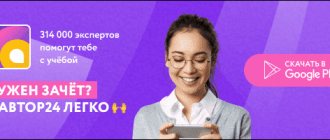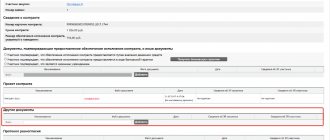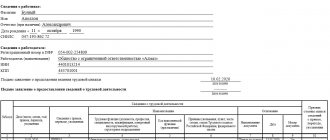Declaration of customs value (DTV) - what is it?
Customs value means the price of purchase and delivery of products to the place of import (export) into the customs territory of the Russian Federation or from this territory. Consequently, the DTS contains information about the customs value (CV) of goods, including the method of determining the value, the conditions and circumstances of the transaction with goods relevant to determining the customs value of goods.
DTS is an integral part of the declaration of goods (DT), according to paragraph 2 of Art. 105 EAEU Labor Code “Customs Declaration”. If the cargo is declared according to a cargo customs declaration (CCD), a DTS must be prepared in the kit.
Section 2. Transportation of passengers
Section 2 reflects data on passenger transportation of residents performed or organized by non-residents.
Column 1 indicates the sequential numbering of the lines.
Column 2 indicates the territorial affiliation of the respondent within the constituent entity of the Russian Federation, which is determined by the OKATO code.
In column 3, select the mode of transport code. For example, if services for the transportation of passengers were carried out by sea, then the code “MOR”, etc. is indicated.
In column 4 , select one of the operation codes. For example, operations for the sale of tickets to residents when they are transported by non-residents between different countries are reflected using code “11”.
Column 5 reflects the digital code of the country of registration of the non-resident transport company selected from OKSM.
Column 6 indicates the digital code of the contract currency. In the case of multi-currency contracts, the code “000” is indicated.
Column 7 reflects the funds accrued in the reporting quarter for sold passenger tickets for flights of non-resident transport companies in the contract currency specified in column 6 . In the case of multi-currency contracts, funds accrued in the reporting quarter are reflected in thousands of rubles.
If the data in columns 2-6 , the data is summed up. The amount of refusals for submitted claims is deducted from the total amount (with the same values in columns 2-6 ) of funds accrued for payment in the reporting quarter. The resulting value is reflected in column 7 .
Methods for determining DTS
There are six methods for determining customs value.
The first is the valuation method based on the transaction price of imported goods. It is used most often (for approximately 90-98% of all imported and exported goods). The calculation formula is as follows:
Customs value = transaction price + additional deductions Additional deductions consist of:
- expenses not included in the buyer's price (remuneration to the intermediary, with the exception of payment to his intermediary; for packaging if it is considered as a single whole with the goods, etc.);
- distributed cost of goods and services that the buyer received at a reduced price or free of charge (raw materials, components; engineering, development, design, etc.);
- prices for the use of intellectual property, etc.
The second is the valuation method based on the transaction price of identical goods. The TC consists of the value of the transaction with goods identical to the imported ones (that is, products that are similar in all respects, including quality, reputation, physical characteristics), which were transported to the Russian Federation no earlier than 90 days before the import of the goods being valued.
Reference. When determining several transaction prices using this method, the smallest one is selected.
The third is the valuation method based on the transaction price of homogeneous goods, that is, products that cannot be called identical, but they have common components that allow them to perform the same functions as the goods being valued. This method uses the same principle as the previous one: if several transaction prices are detected, the lowest one is selected. The fourth is the cost subtraction valuation method. The sales price in the Russian Federation for homogeneous or identical products is reduced due to:
- commissions;
- normal profit allowances and general selling expenses;
- expenses for insurance and transport incurred within the territory of Russia;
- amounts of import customs duties.
Fifth is the valuation method based on the addition of costs. The TC consists of the total costs associated with the sale of goods in the Russian Federation from the exporting country; exporter's profit from delivery; average production costs of the exporter. The sixth is a backup method. Here, the vehicle price is calculated on the basis of global customs practice using price information provided by the customs authority.
Note. The DTS serves as the basis for calculating customs duties and fees.
It should be noted that for calculation methods, the package of accompanying documentation may vary. For example, DTS-2 is filled out in all cases, except those when the calculation method is used based on the transaction price of transported products (for this only DTS-1 is filled out).
Legislative framework of the Russian Federation
valid Editorial from 01.01.1970
detailed information
| Name of document | ORDER of the Federal Customs Service of the Russian Federation dated January 27, 2011 N 151 “ON APPROVAL OF THE FORM OF THE DECLARATION OF CUSTOMS VALUE (DTS-2) AND RULES FOR COMPLETING THE DECLARATION OF CUSTOMS VALUE FORM DTS-2” |
| Document type | order, rules |
| Receiving authority | Federal Customs Service of the Russian Federation |
| Document Number | 151 |
| Acceptance date | 09.06.2011 |
| Revision date | 01.01.1970 |
| Registration number in the Ministry of Justice | 20189 |
| Date of registration with the Ministry of Justice | 18.03.2011 |
| Status | valid |
| Publication |
|
| Navigator | Notes |
ORDER of the Federal Customs Service of the Russian Federation dated January 27, 2011 N 151 “ON APPROVAL OF THE FORM OF THE DECLARATION OF CUSTOMS VALUE (DTS-2) AND RULES FOR COMPLETING THE DECLARATION OF CUSTOMS VALUE FORM DTS-2”
CUSTOMS VALUE DECLARATION FORM (DTS-2)
| DECLARATION OF CUSTOMS VALUE | |||
| Form DTS-2 | |||
| 1 | Seller (supplier) | FOR CUSTOMS AUTHORITY MARKS | |
| 2 | (a) Buyer (recipient) | ||
| 2 | (b) Declarant | ||
| 3 Delivery conditions | |||
| IMPORTANT INFORMATION In accordance with Article 65 of the Customs Union, the declarant or customs representative is responsible for indicating false information in the customs value declaration. The declarant is also obliged to provide, if necessary, relevant additional information and the necessary documents confirming the information used to determine the declared customs value. | 4 Type, number and date of the document that is the basis for the delivery of goods | ||
| 5 | Number and date of the document with decisions made by customs authorities on previously imported goods according to the document specified in column 4 | ||
| 6 | The customs value of declared goods is determined using the method | Correct mark [X] | |
| (a) in accordance with Article 6 of the Agreement on determining the customs value of goods moved across the customs border of the Customs Union dated January 25, 2008 (method 2) | [_] | ||
| (b) in accordance with Article 7 of the Agreement on determining the customs value of goods moved across the customs border of the Customs Union dated January 25, 2008 (method 3) | [_] | ||
| (c) in accordance with Article 8 of the Agreement on determining the customs value of goods moved across the customs border of the Customs Union dated January 25, 2008 (method 4) | [_] | ||
| (d) in accordance with Article 9 of the Agreement on determining the customs value of goods moved across the customs border of the Customs Union dated January 25, 2008 (method 5) | [_] | ||
| (e) <*> in accordance with Article 10 of the Agreement on determining the customs value of goods moved across the customs border of the Customs Union dated January 25, 2008 (method 6) if the customs value is determined using the reserve method based on another method, both methods are noted simultaneously | [_] | ||
| (f) different (if different methods are used for different products) | [_] | ||
| 7 | Reasons why previous methods for determining customs value are not applicable | ||
| 8 | Name and details of the main documents presented in support of the information provided | ||
| <*> AS A BASIS FOR DETERMINING THE CUSTOMS VALUE OF GOODS BY THE METHOD in accordance with Article 10 of the Agreement on Determining the Customs Value of Goods Moved Across the Customs Border of the Customs Union, dated January 25, 2008, THE following CANNOT BE USED: | 9 Number of additional sheets | ||
| 10 Place, date, signature, seal | |||
| — prices for goods on the internal market of the Customs Union, produced in the single customs territory of the Customs Union; | |||
| — systems providing for the acceptance for customs purposes of the higher of two alternative costs; | |||
| — prices for goods in the domestic market of the exporting country; | |||
| - expenses other than those included in the estimated cost, which was determined for identical or similar goods; | |||
| - prices of goods supplied from the country of their export to third countries; | |||
| — minimum customs value; | |||
| — arbitrary or fictitious cost. | |||
Form DTS-2 Sheet N ___
Methods 2, 3, 6
| FOR CUSTOMS AUTHORITY MARKS | Product N | Product N | Product N | ||
| CU FEACN code | CU FEACN code | CU FEACN code | |||
| A. | Basis for calculation | 11 | Cost of a transaction with identical/similar goods in RUBLES | ||
| B. | Transaction value adjustments (+/-) <*> | 12 | (a) adjustment for quantity (-) | ||
| (b) commercial level adjustment (-) | |||||
| (c) adjustment for the difference in costs for transportation (transportation) of goods to ________ (place of arrival in the single customs territory of the Customs Union) (-) | |||||
| (d) adjustment for differences in costs for loading, unloading/reloading of goods and operations related to transportation to _____ (place of arrival in the single customs territory of the Customs Union) (-) | |||||
| (e) adjustment for differences in insurance costs in connection with the operations specified in columns 12c and 12d (-) | |||||
| 13 | Total column 12 in rubles | ||||
| 14 | (a) adjustment for quantity (+) | ||||
| (b) commercial level adjustment (+) | |||||
| (c) adjustment for the difference in costs for transportation (transportation) of goods to ________ (place of arrival in the single customs territory of the Customs Union) (+) | |||||
| (d) adjustment for differences in costs for loading, unloading/reloading of goods and operations related to transportation to _____ (place of arrival in the single customs territory of the Customs Union) (+) | |||||
| (e) adjustment for differences in insurance costs in connection with the operations specified in columns 14c and 14d (+) | |||||
| 15 | Total column 14 in rubles | ||||
| 16 | Transaction cost taking into account adjustments (11 - 13 + 15) in rubles | ||||
| 17 | Quantity | ||||
| (a) identical/similar goods | |||||
| (b) declared goods | |||||
| 18 | DECLARED CUSTOMS VALUE (16 / 17A * 17B) | ||||
| (a) in RUBLES | |||||
| (b) in US DOLLARS (conversion rate ________) | |||||
| <*> If the amount is paid in foreign currency, the amount in foreign currency and the conversion rate for each product and cost element are indicated here. | |||||
| Item and position number | Currency code, amount | Conversion rate | |||
| Additional data | Signature stamp | ||||
Form DTS-2 Sheet N ___
Methods 4, 6
| FOR CUSTOMS AUTHORITY MARKS | Product N | Product N | Product N | |||
| CU FEACN code | CU FEACN code | CU FEACN code | ||||
| A. | Basis for calculation | 11 | The price of a unit of valued, identical or homogeneous goods (in RUBLES), at which their largest aggregate quantity is sold to persons who are not related persons with persons selling in the single customs territory of the Customs Union | |||
| B. | Deductions of amounts included in section A | 12 | Remuneration to the intermediary (agent) or a premium to the price usually made to make a profit and cover commercial and administrative expenses | |||
| 13 | Costs of transportation (transportation), insurance and other expenses associated with such operations carried out in the single customs territory of the Customs Union | |||||
| 14 | Customs duties, taxes, fees payable in connection with the import of goods into the single customs territory of the Customs Union or their sale on the territory of a member state of the Customs Union, including taxes and fees of subjects of a member state of the Customs Union and local taxes and fees | |||||
| 15 | Value added by processing (processing) | |||||
| 16 | Total B in rubles (according to columns 12 to 15) | |||||
| 17 | Number of goods declared | |||||
| 18 | DECLARED CUSTOMS VALUE (11 – 16) x 17 | |||||
| (a) in RUBLES | ||||||
| (b) in US DOLLARS (conversion rate ________) | ||||||
| Additional data | Signature stamp | |||||
Form DTS-2 Sheet N ___
Methods 5, 6
| FOR CUSTOMS AUTHORITY MARKS | Product N | Product N | Product N | ||||
| CU FEACN code | CU FEACN code | CU FEACN code | |||||
| A. | Basis for calculation <*> | 11 | Expenses for the production/purchase of materials and expenses for production, as well as for other operations related to the production of imported goods | ||||
| 12 | Costs associated with the production of imported goods, including: the appropriately distributed cost of the following goods and services, directly or indirectly provided by the buyer free of charge or at a reduced price for use in connection with the production and sale for export to the single customs territory of the Customs Union of the goods being valued in amount not included in the price actually paid or payable: | ||||||
| (a) raw materials, materials, parts, semi-finished products and the like that make up the imported goods | |||||||
| (b) tools, dies, molds and other similar items used in the production of imported goods | |||||||
| (c) materials used in the production of imported goods | |||||||
| (d) design, development, engineering, design work, decoration, design, sketches and drawings made outside the single customs territory of the Customs Union and necessary for the production of imported goods | |||||||
| (e) the cost of design, development, engineering, design work, decoration, design, sketches and drawings made in the single customs territory of the Customs Union and necessary for the production of the goods being valued within the limits paid by the manufacturer | |||||||
| (e) costs of containers and packaging | |||||||
| 13 | The amount of profit and commercial and administrative expenses | ||||||
| 14 | Costs for transportation (transportation) of goods to _______________________ (place of arrival in the single customs territory of the Customs Union) | ||||||
| 15 | Costs for loading, unloading/reloading of goods and operations related to transportation to ________________ (place of arrival in the single customs territory of the Customs Union) | ||||||
| 16 | Insurance costs in connection with the operations specified in columns 14 and 15 | ||||||
| 17 | Estimated cost in rubles (total according to columns 11 to 16) | ||||||
| 18 | DECLARED CUSTOMS VALUE | ||||||
| (a) in rubles | |||||||
| (b) in US DOLLARS (conversion rate ________) | |||||||
| <*> If the amount is set in a foreign currency, the amount in foreign currency and the conversion rate for each product and cost element are indicated here. | |||||||
| Item and position number | Currency code, amount | Conversion rate | |||||
| Additional data | Signature stamp | ||||||
Form DTS-2 Sheet N ____
Method 6
| FOR CUSTOMS AUTHORITY MARKS | Product N | |||
| CU FEACN code | ||||
| A. | Basis for calculation | 11 | in CURRENCY OF SOURCE DATA (currency type code _________________) | |
| in RUBLES (conversion rate __________________) | ||||
| B. | Calculation | 12 | ||
| 13 | DECLARED CUSTOMS VALUE | |||
| (a) in RUBLES | ||||
| (b) in US DOLLARS (conversion rate ____________) | ||||
| Additional data | Signature stamp | |||
Appendix No. 2
to the Order of the Federal Customs Service of Russia dated January 27, 2011 No. 151
Filling out the DTS
There are different forms of TPA for import and export transactions. In the first case, these are forms DTS-1 and DTS-2, and in the second - DTS-3, DTS-4. All of them consist of two main sheets.
The first sheet (regardless of the form) contains information about all goods subject to declaration and indicated in one cargo customs declaration. On the second sheet, the cost is calculated using the first method (but if this method is not suitable, select the appropriate one from the other calculation methods). The form of the second sheet of DTS-2 and 4 is selected depending on the method of calculation (from 1 to 6) of the customs value.
Calculation of customs value
The presented values directly affect the final result:
- market value of inventory items;
- transportation costs;
- insurance services;
- paperwork;
- additional expenses.
All types of expenses require documentary evidence and (or) economic justification. Otherwise, they cannot be taken into account in the declaration of the customs value of imported goods.
How to fill out a declaration
All TTS forms consist of two pages, each of which discloses information about transportation. The first page of the document contains information about the transported goods. Here they indicate the name, quantity, customs value, characteristics and other indicators of the cargo. Any inaccuracy or error may lead to problems and disputes with customs inspectors.
The second sheet of the TTS is a detailed calculation of the cost and information on the method of its calculation.
Customs officers have the right to request supporting documentation. Papers are required to confirm calculations and transportation information. The main requirements for filling out a declaration of customs value are documentary evidence. If justifications are not submitted to customs officers for consideration, controllers have the right to refuse to transport cargo across the border.
Additional documents
In some cases, customs officers may additionally request the following documents:
- invoice (invoice);
- invoices confirming payment of commission fees and other payments;
- a certificate displaying information about the origin of the product;
- accounting documents;
- copy of the customs declaration;
- supply agreement;
- licensing contract;
- invoices for making payments in the interests of the seller;
- cargo manufacturer price lists;
- data on the main properties of the product;
- calculation of the cargo manufacturer;
- data from stock exchange and foreign trade companies on the price of cargo.
Filling cost
If a participant in foreign economic activity (FEA) has entrusted the completion of the declaration to a customs broker, the approximate cost is from 1,000 to 2,500 rubles. But it is worth considering that different regions have their own prices, and the price lists of the brokers themselves may vary significantly.
Title page
On the title page, the respondent organization reflects information about itself:
- codes that allow identification of the respondent: OGRN, OKPO, INN, OKVED, OKFS, OKATO, OKOPF;
- the full name of the reporting organization in accordance with the constituent documents;
- address specified in the Unified State Register of Legal Entities, as well as actual and postal;
- Full name of the person who compiled the report, his telephone number and email address;
- fax, email address and official website of the respondent.
In the column “Type of transport activity” one or more codes are indicated. For example, code “01” is indicated by organizations engaged in transportation, “02” by transport forwarders, etc.
Next, in the corresponding field, the number of branches and representative offices of the respondent, information on which is included in the report, is indicated.
In the “Report Type” , for each of sections 1-3, select:
- “Data zero” (code “00”), if the section contains only zero indicators;
- “Non-zero data” (code “01”) if there are non-zero indicators in the section.
The date of preparation of the report, full name and position of the authorized person are also indicated.
Submission of DTS
The rules for filing TPA for import and export are the same. In both cases, the declarant fills out and submits two copies to customs officers. The first form remains with the receiving controllers, and the customs officers put the appropriate mark on the second and return it to the sender.
In what cases does it not need to be submitted?
When importing, this document is not submitted in the following cases:
- if goods are placed under customs procedures that do not provide for the payment of duties and taxes;
- if, based on the declared value, there is no obligation to pay customs duties and taxes;
- if the total customs value of the imported consignment of goods does not exceed the amount that can be established in the EAEU member state and should not exceed an amount equivalent to 10,000 US dollars, with the exception of multiple (two or more times) deliveries within the framework of one contract, as well as repeated (two or more times) deliveries of the same goods by one sender to the same recipient under different contracts.
When exporting, DTS does not need to be submitted if export customs duties and taxes are not established for the products, calculated on the basis of their customs value.
Section 1. Carriage of goods
Section 1 reflects data on freight transportation performed or organized by non-residents.
Column 1 indicates the sequential numbering of the lines.
Column 2 indicates the territorial affiliation of the respondent within the constituent entity of the Russian Federation in accordance with the OKATO code.
In column 3, for non-resident transport companies, select the mode of transport code. For example, if cargo transportation services under one contract were provided by river transport, then the code “RECH” is indicated, by several modes of transport - “MLT”, etc.
Column 4 indicates the digital code of the country of registration of the non-resident, selected from OKSM, with whom the freight transportation agreement or transport expedition agreement was concluded.
In columns 5-6 from the OKSM directory, the digital code of the country of departure and destination of the cargo is selected.
Column 7 indicates the digital code of the country of registration of the transport company carrying out the transportation, in accordance with the OKSM directory.
Column 8 indicates the digital code of the contract currency. In the case of contracts denominated in several currencies (multi-currency contracts), the code “000” is indicated.
Column 9 reflects the funds accrued in the reporting quarter for payment for consumed freight transportation services in the contract currency specified in column 8 . In the case of multi-currency contracts, funds accrued in the reporting quarter are reflected in thousands of rubles.
If the data in columns 2-8 , the data is summed up. The amount of refusals for submitted claims is deducted from the total amount (with the same values in columns 2-8 ) of funds accrued for payment in the reporting quarter. The resulting value is reflected in column 9 .
Vehicle adjustment
Errors and omissions when preparing declaration documentation are not uncommon. If customs officers refused to accept the cargo, pointing out an inaccuracy in registration, the errors should be corrected. In this case, declaration and adjustment of customs value are carried out according to the standard. Corrections are made to the documentation to reflect the actual values and characteristics of the transportation.
Note. Not only the declarant, but also his official representative has the right to make adjustments. Also, customs inspectors can independently correct documents. Then the declarant does not need to fill out additional paperwork.
It is worth noting a number of features of the adjustment process:
- When carrying out the procedure, the declarant is required to adjust the value, and then pay duties and other payments, taking into account the recalculation of the customs value. Payment of payments must be made within a period not exceeding the time of release of the cargo.
- If the adjustment is carried out by the customs authority, after making the corrections, a CTS (customs value adjustment) form is prepared. Copies of both documents are sent to the customs broker or declarant within the established time frame.
- If the adjustment is carried out at the request of the broker, he must provide the customs vehicle with the TTS, CTS and the attached documents.
To make an adjustment, the declarant must draw up a written application in free form. It indicates the registration number of the declaration, documents confirming the calculations made.









